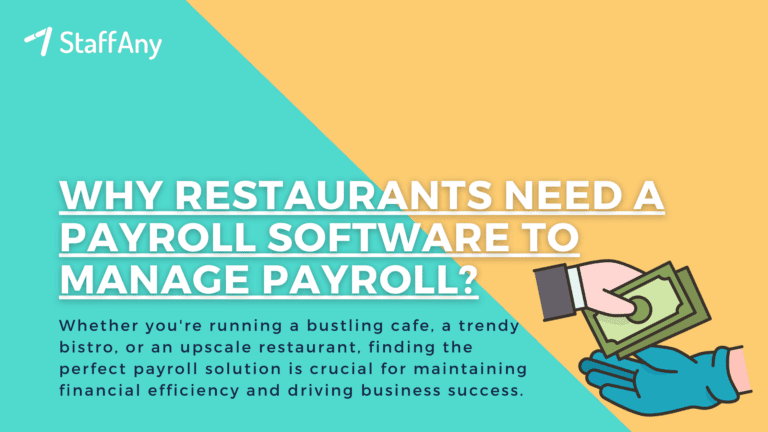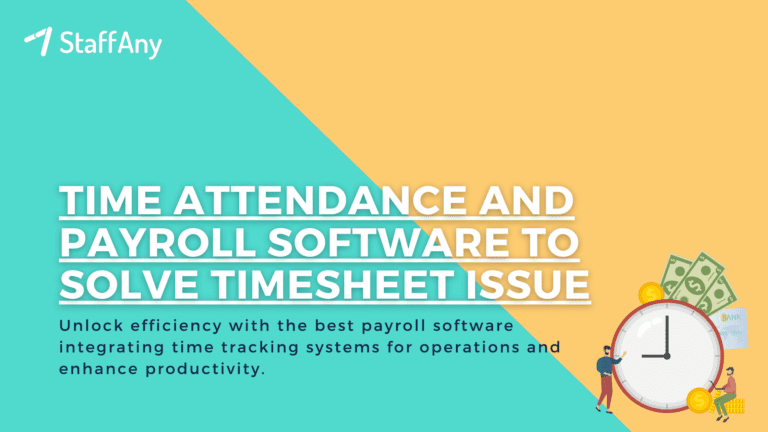In the fast-paced and dynamic world of the F&B industry, the occurrence of a food crisis is not a matter of ‘if,’ but ‘when.’ These crises can manifest in various forms, from contaminated ingredients to supply chain disruptions or even foodborne illnesses, and they pose a significant challenge to businesses in this sector. The consequences are far-reaching, impacting not only a company’s reputation but also public health and financial stability.
To navigate this complex landscape successfully, F&B professionals must be well-prepared, understand the root causes and consequences, and how to effectively deal with food crises. Thus, this article will provide a comprehensive guide on how to deal with food crises in the F&B industry, ultimately safeguarding the integrity of your business and the well-being of your customers. Let’s get started!
What Is Food Crises in the F&B Industry?
Food crises in the F&B industry are disruptive events that have the potential to jeopardise the safety and quality of food products, often leading to severe consequences for businesses and consumers alike. These crises can manifest in several forms, such as contamination of ingredients, foodborne illnesses, supply chain disruptions, or even incidents of fraud and mislabeling.
What sets food crises apart in the F&B industry is their capacity to trigger a cascade of adverse effects, including damage to a company’s reputation, financial losses, regulatory interventions, and, most critically, harm to public health. Understanding the nature of these crises is a foundational step towards effective management and prevention.
Read more: Exploring 5 Tasks of Food and Beverage Manager
Understanding the Causes and Consequences of Food Crises in the F&B Industry
To tackle the challenge of food crises effectively, it is imperative to explore their root causes and the far-reaching consequences they can entail. In the F&B industry, these crises often emerge from various sources, encompassing internal and external factors. Contaminated ingredients, poor food handling practices, lapses in quality control, and supply chain vulnerabilities are just a few of the triggers.
The consequences of food crises are equally diverse, from customer illnesses and legal liabilities to regulatory actions, product recalls, and the erosion of consumer trust. In this section, we will delve deeper into these causes and consequences, providing insights essential for those involved in the F&B industry to safeguard their operations and maintain the highest standards of quality and safety.
Read more: Mastering Food Service Management: Strategies for Success
Preparing for a Food Crisis in the F&B Industry
In the ever-evolving and dynamic landscape of the F&B industry, proactive measures are paramount to prevent and mitigate the impact of food crises. To achieve this, businesses need to take two crucial steps:
1. Conducting a Risk Assessment
The first line of defence against food crises is a thorough risk assessment. This process involves a systematic evaluation of the potential threats and vulnerabilities within your F&B operation. It encompasses several key aspects:
- Ingredients and Suppliers: Scrutinising the quality and safety of ingredients, as well as the reliability of your suppliers, is fundamental. This includes robust testing procedures and quality control measures.
- Supply Chain Vulnerability: Understanding the intricacies of your supply chain is critical. Identify weak links that could leave your operation susceptible to disruptions, whether from natural disasters or other unforeseen events.
- Regulatory Compliance: Stay up-to-date with the latest food safety regulations and standards. Ensure that your operation complies with these requirements to mitigate regulatory risks.
- Hazard Analysis: Identify potential hazards compromising food safety, such as cross-contamination, improper storage, or inadequate sanitation practices.
By conducting a comprehensive risk assessment, you gain a clear understanding of the specific vulnerabilities within your operation. This knowledge is invaluable for early detection and prevention.
2. Developing a Crisis Management Plan
A crisis management plan is your roadmap to handling food crises effectively. It should be a detailed document outlining the procedures, responsibilities, and communication strategies that your team will follow when a crisis emerges. The plan is a dynamic tool that evolves with your operation and changing risk factors. Here are key components to include in your crisis management plan:
- Crisis Response Team: Designate individuals within your organisation who will manage the crisis. Clearly define their roles and responsibilities.
- Response Procedures: Outline step-by-step procedures for responding to crises, from contamination incidents to supply chain disruptions.
- Communication Strategy: Determine how you will communicate internally and externally during a crisis. This includes informing your team, suppliers, customers, regulatory authorities, and the public.
- Training and Drills: Regular training and drills are crucial to ensure your team is well-prepared to implement the plan effectively. Practice scenarios to test the plan’s readiness.
- Continuous Improvement: Your crisis management plan should be a living document. Regularly review and update it based on new risks and lessons learned from previous incidents.
By developing a well-structured crisis management plan, you equip your business with the tools and procedures necessary to respond swiftly and effectively when a food crisis occurs. This preparedness is essential in minimising the damage and restoring confidence in your products and brand.
Read more: 13 Common Food Industry Problems and Solutions
How to Deal with Food Crisis in the F&B Industry
When a food crisis strikes in the F&B industry, it’s imperative to respond swiftly and decisively. Effective crisis management involves a well-structured approach encompassing several key steps, ensuring that the crisis is handled efficiently and its consequences minimised.
1. Identifying the Source of the Problem
The first critical step in dealing with a food crisis is identifying the source of the problem. This requires a thorough investigation to pinpoint the root cause. The source could be a contaminated ingredient, a foodborne illness outbreak, a supply chain disruption, or another issue. Swiftly and accurately identifying the problem is vital, as it forms the basis for all subsequent actions.
2. Containing the Crisis to Prevent Further Damage
Once the source of the crisis is identified, containment measures need to be put in place immediately. Containment aims to prevent the crisis from escalating and causing more damage. Depending on the nature of the crisis, this may involve isolating affected products, halting specific production processes, or initiating a product recall if necessary. Effective containment is vital to limit the impact on consumers and your business.
3. Implementing a Crisis Management Plan
Having a well-documented crisis management plan is invaluable at this stage. The plan should outline the procedures, responsibilities, and communication strategies to follow during a crisis. It is a structured guide for dealing with the crisis effectively.
Actions defined in the plan may include coordinating with the crisis response team, executing containment measures, and making critical decisions in a coordinated manner.
4. Communicating with Stakeholders
Effective communication is at the heart of managing a food crisis in the F&B industry. Timely, open, and transparent communication is vital, involving stakeholders such as customers, suppliers, regulatory authorities, and the media. Proper communication serves multiple purposes:
- Maintaining Trust: Transparency helps maintain trust in your brand by showing that you take the crisis seriously and are committed to resolving it.
- Consumer Safety: Keeping customers informed about the situation allows them to take necessary precautions and provides reassurance about your commitment to their safety.
- Regulatory Compliance: Adhering to regulatory requirements for reporting and communication is essential to avoid legal issues.
- Managing Reputation: Effective communication can help mitigate reputational damage and facilitate rebuilding your brand after the crisis has been resolved.
Dealing with a food crisis is a complex process that requires a well-coordinated effort. Each of these steps is interlinked and plays a crucial role in managing the crisis efficiently. By following these guidelines, businesses in the F&B industry can navigate the challenging terrain of food crises, protecting their consumers, their brand, and their bottom line.
Read more: The Overview of Food and Beverage Industry in Malaysia
Preventing Future Food Crises
While effectively managing food crises is crucial, an even more critical aspect is preventing them from occurring in the first place. A proactive approach to food safety and quality control is essential to safeguard the integrity of the F&B industry. Here are key strategies to prevent future food crises:
1. Implementing Quality Control Measures
Rigorous quality control measures are the cornerstone of food crisis prevention. These measures encompass strict standards and practices at every production stage, from sourcing ingredients to serving the final product to customers. Implementing quality control measures involves:
- Thorough Ingredient Testing: Conduct comprehensive testing and evaluation of ingredients to ensure their quality and safety before they are integrated into your products.
- Hygiene Protocols: Establishing and enforcing stringent hygiene protocols for all personnel involved in food preparation, ensuring that the risk of contamination is minimised.
- Regular Equipment Maintenance: Ensuring that all equipment is well-maintained to prevent any potential issues that could compromise food safety.
- Storage and Handling Procedures: Implementing proper storage and handling procedures to prevent spoilage, cross-contamination, and other issues that can lead to food crises.
2. Establishing a Food Safety Management System
A robust food safety management system is instrumental in preventing food crises. It involves a holistic approach to food safety that encompasses:
- Adherence to Standards: Complying with international food safety standards and regulations, including Hazard Analysis and Critical Control Points (HACCP) and ISO standards.
- Continuous Monitoring: Implementing a system for continuous monitoring and documentation of food safety practices, including temperature control, hygiene, and sanitation.
- Traceability: Ensuring that you have a system that allows you to trace the origin of ingredients and products, which is crucial for swift action in case of contamination.
- Recall Procedures: Establishing clear procedures for initiating product recalls if needed, which is a vital component of any food safety system.
3. Conducting Regular Audits and Inspections
Regular audits and inspections, both internal and external, are essential to identify vulnerabilities and areas for improvement in your food safety and quality control measures. These audits can include:
- Internal Audits: Conduct regular internal audits to ensure that your operation consistently meets food safety and quality standards.
- Third-Party Audits: Engaging third-party auditing agencies to perform independent assessments of your food safety protocols, providing valuable insights and validation.
- Supplier Audits: Auditing your suppliers to ensure they meet your quality and safety standards, as their practices can directly impact your products.
4. Training Employees on Food Safety and Crisis Management
Your employees are your first line of defence against food crises. Comprehensive training is vital for:
- Food Safety Protocols: Ensuring all employees are well-trained in food safety protocols, including proper food handling, storage, and sanitation.
- Crisis Management: Training your team on responding to crises effectively, including their roles and responsibilities outlined in the crisis management plan.
- Regular Drills: Conduct regular drills and simulations to keep your team’s crisis management skills sharp and to test the effectiveness of your crisis management plan.
By implementing these strategies, businesses in the F&B industry can reduce the risk of food crises, safeguard the safety of their products, and maintain consumer trust and confidence. Prevention is not only the most cost-effective approach but also the most responsible one for the well-being of consumers and the industry’s reputation.
In conclusion, in the ever-evolving F&B industry, being prepared for food crises is not an option; it’s a necessity. Whether you’re focused on understanding the causes and consequences, or you’re actively involved in prevention and crisis management, a proactive approach to food safety and knowledge on how to deal with food crises is paramount.
To streamline your F&B operations and ensure efficient scheduling and time management, consider using StaffAny’s roster planning software. With our online timesheet tracker, you can easily make quick and efficient updates on the go.
Whether extending a shift, adjusting hours, or tracking time spent, our all-in-one online timesheet solution is designed to streamline your time management processes. Don’t wait for a crisis to strike – be prepared and take control of your scheduling with StaffAny!











